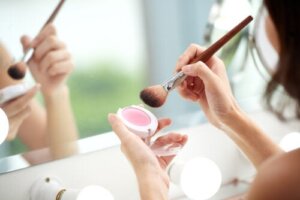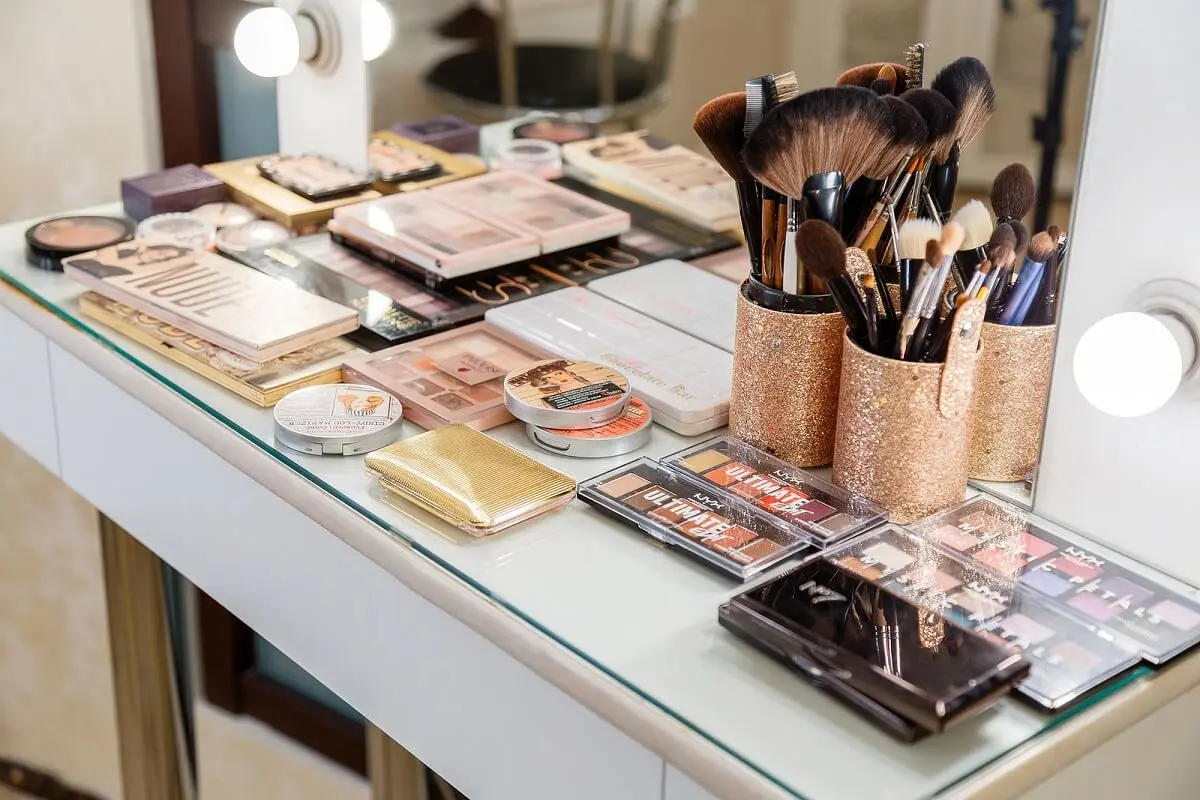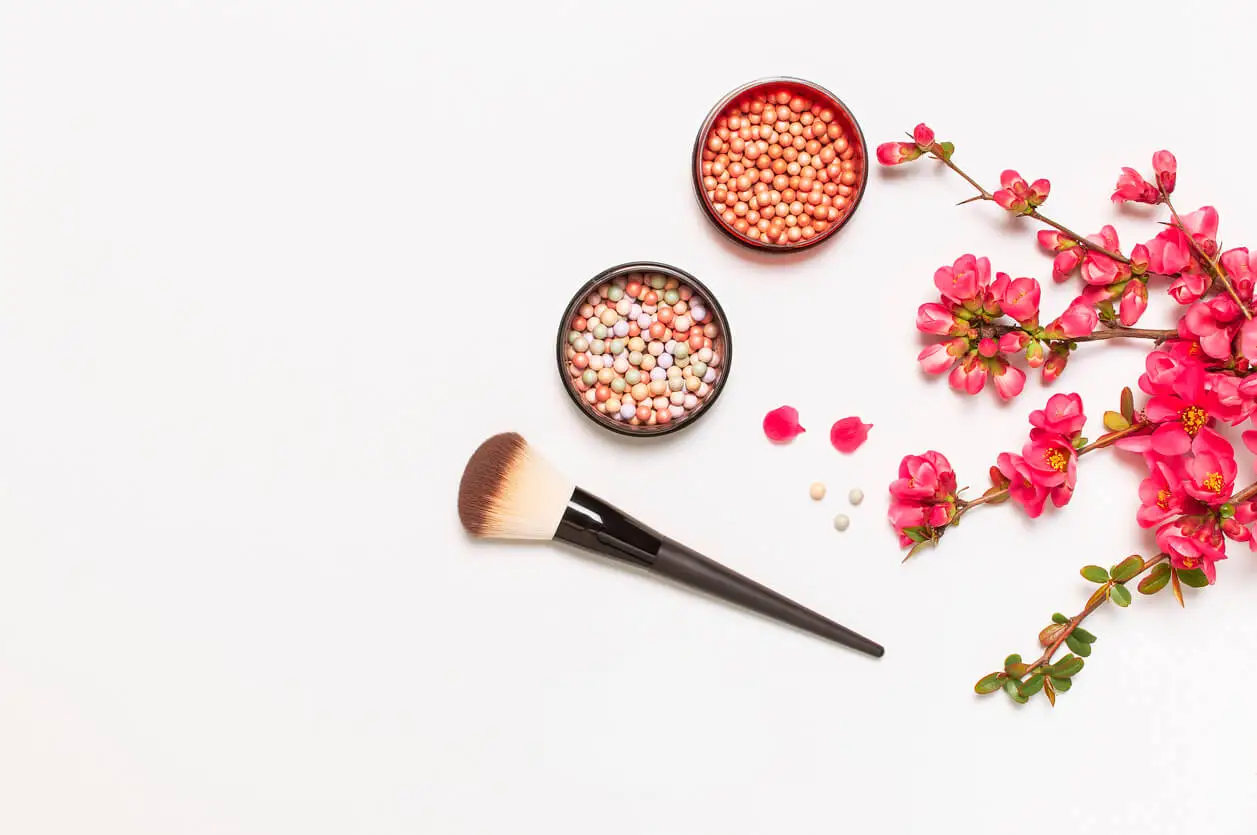Types of Blushes and Their Characteristics

When it comes to make-up, there’s one product that can’t compete with the others because of its versatility and importance. If we don’t have a complete makeup kit at hand, blush can get us out of trouble because it has the effect of changing the expression of the face by making it look more vital. Bearing this in mind, here are the types of blushes that exist, their characteristics, and how to use them.
Blush, also known as rouge, can give volume or contour to the face. Also, in case of an emergency, it can be used as eye shadow and even to give color to the lips.
On the other hand, it allows you to create a fresh look by giving the appearance of good health. In fact, its name comes from the expression “to blush”, which can be the result of many emotions.
By the 1920s, blushes came to stay as part of everyday makeup. Initially, they tended to be pink tones, which resembled the natural colors of the skin. Later, around the 1950s, earth tones also arrived.
The most common types of blushes
The technique of applying blush, in all cases, consists of placing it on the cheeks with soft circles in the cheek area. The exact place to put it depends on the effect you want to achieve and the type of face you have. However, it usually follows the line of the cheekbones or in the natural curves that form on the face when smiling.
There’s a variety of blushers on the market for all skin types and in different presentations: powder, stick, cream, liquid, and ink. The important thing is to find the right one for each complexion, as well as to read the instructions and recommendations for excellent results.
In this article, we’ll tell you about the different types and shades of blush and their characteristics.
We think you may also enjoy reading this article: The Purpose of Color Correcting Makeup and How to Use It
1. Powder blush
This is the most popular kind of blush and one of the most durable on the skin. It’s usually found in pressed powder; however, it also exists in loose powder. In fact, it’s a universal and basic product that will always work well and has no major complications in its application.
It can also be purchased in matte or satin presentation. In this regard, it should be noted that the first shade is recommended for mature skins, while younger skins should opt for satin. The matte effect may also be better for everyday makeup, because it’s more natural and not so flashy.
For the application of blush or powder blush, it’s recommended to choose a soft and bushy brush of medium to large size.
After dipping the brush into the powder, you can place it on yourcheekbone and glide it up to the hairline, just at the level of the ear. In this way, you will highlight your features while providing contour and symmetry. Also, if you have a more elongated and thinner face, you can smile and apply it in circles on the natural curves that form below the cheekbone.
When applying makeup, if we don’t have specific products for contouring, the combination of blushes from light to dark tones can be very useful to bring symmetry to the face. For this reason, we recommend beige, pink, and earth colors in our makeup kit.

2. Types of blushes: Cream blush
This is a blush that also works as lipstick and leaves a delicate and natural effect. However, it’s not recommended for oily skin or for times when it is very hot, because it can run. However, it can be sealed with powder to give it more durability.
It’s available in a variety of packaging and colors. To apply this type of blush, it’s recommended to use a sponge, as it’s prone to generate stains on the face when we do it with our fingers.
It can be applied with a specialized brush for cream products. However, it requires paying attention and practice to achieve the desired blending effect.
Like this article? You may also like to read: 10 Reasons to Remove Your Makeup Every Night
3. Liquid Blush
Types of liquid blushes are similar to cream blushes, giving the appearance of naturalness and moisturized skin. Generally, they’re not a well-known type of blush, as they’re more commonly found in professional makeup. In this regard, they have the power to give freshness to the face, with good durability.
If you use this type of blush, the results can be amazing. Due to its fluid texture, it’s ver easy to apply; you can use it with a sponge, a brush, or even your fingers.
Because of its fluidity, it’s prone to staining. On the other hand, it’s recommended for use on dry skin, because in addition to moisturizing it may contain water-based emollients. It’s also useful to use a setting spray.
4. Types of blushes: Ink blush
If you want to have a natural look, this is the blush you could choose, because it’s structured with pigmentation in a very light liquid base, leaving the face with a healthy and fresh effect. This type of blush shouldn’t be applied over a powder foundation, however, as it can create clumps.
Sometimes, we may be tired, have had a bad night, or we’re simply pale with dull, colorless skin. Ink blush is a good idea in these cases. It’s usually light and achieves the effect of looking like you’re not wearing makeup. It can be applied with fingers or a sponge.
5. Types of blushes: Pearl blush
This type of blush is very similar to powder. In fact, they’re small pearls made of pressed powder.
The difference is that they come in different colors and effects, so when you mix them, you get very interesting shades. They have the advantage that they don’t give off as much color and give a more natural finish.

How to choose the right color of blush
After knowing what types of blushes exist and their characteristics, you should know how to choose the right color for your skin type and face. A guide on professional makeup points out that colors are grouped into three main categories:
- Golds
- Pinks
- Beiges
The pink tones are for very white skin types, which don’t look good with beige. The latter, on the other hand, are ideal for medium-brown skin. In this sense, it’s the most universal color group. Finally, golden shades are ideal for dark and black skin, because they add luminosity.
In any case, blush is an essential product for creating the perfect make-up and giving harmony to the face. Therefore, you should feel comfortable with the color. It’s a matter of trying and choosing.
Feel free to experiment with the wide variety of textures and colors.
Get the most out of the many types of blushes
Blush is a wonderful and indispensable product in any makeup kit. It can be found in many presentations and colors. In addition, it can be used for different purposes, in case you find yourself on a trip or with little space available in your purse.
Make the most of it to always have it at hand and be able to use it whenever you need it. Remember to choose several shades.
In addition, you should know that blush is one of the products that can also be found in ecological alternatives created from natural pigments. As a final recommendation, before applying any makeup, make sure to maintain a healthy facial care routine with proper cleansing and moisturizing.
All cited sources were thoroughly reviewed by our team to ensure their quality, reliability, currency, and validity. The bibliography of this article was considered reliable and of academic or scientific accuracy.
- Ribes, S., Corral, R., & Úbeda, L. (s/f). ESTRATEGIAS Y CONOCIMIENTOS TÉCNICOS PARA EL DOMINIO DE LA PROFESIÓN DE MAQUILLADOR PROFESIONAL: El estudio del color, análisis del rostro para el tratamiento de sus imperfecciones, técnicas de maquillaje, los cosméticos y sus procedimientos de aplicación. Videocinco Editorial.
This text is provided for informational purposes only and does not replace consultation with a professional. If in doubt, consult your specialist.








